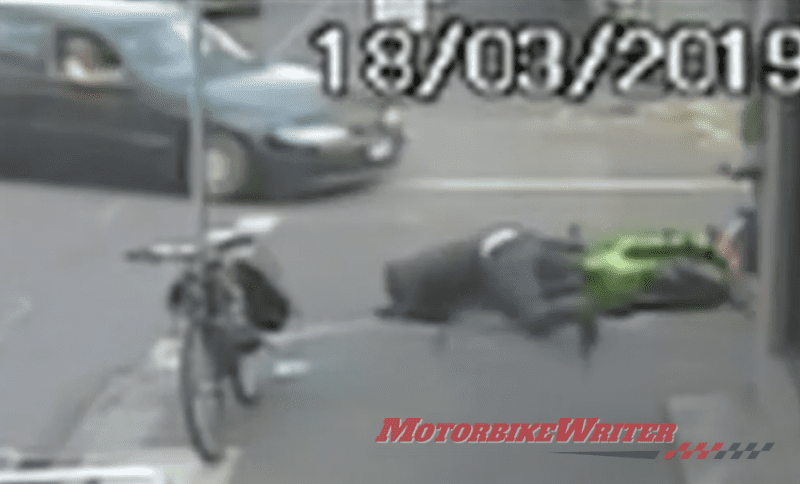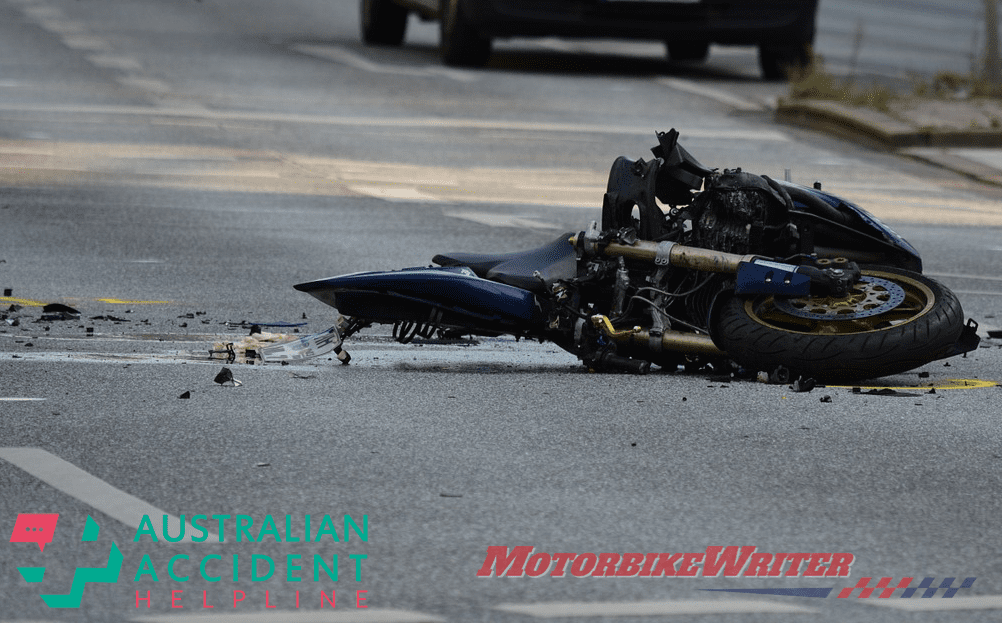Riders have been called to show their support and concern for their safety today (27 May 2019) ahead of a major Victorian Road Trauma Summit next Friday.
Melbourne riders are asked to gather outside the ABC studios at 120 Southbank Boulevard tomorrow from 9-10.30am during a radio forum on safety that previews the government’s summit.
They are also urged to contact the talkback number (1300 222 774 or SMS 0437 774 774 rates apply) to voice their concerns about rider safety.
The ABC’s Jon Faine will host a panel on Radio 774 discussing the road toll and what can be done.
The panel includes the Traffic Accident Commission, VicRoads, Monash University Accident Research Centre and Police.
Victorian lives lost
So far this year, 26 motorcyclists have died on Victorian roads which is nine above the five-year average of 17 and 10 more than last year. Many more have been injured and there haas been a spate of hit-and-run accidents leaving riders dead or injured.
The state government’s summit on Friday will include experts from the TAC, VicRoads, VicPol, MUARC, RACV, Road Trauma Support Services Victoria and cycling and motorcycle advocates including the Victorian Motorcycle Council and the Motorcycle Expert Advisory Panel.
It will be hosted by Minister for Roads, Road Safety and the TAC Jaala Pulford and Minister for Police and Emergency Services Lisa Neville.
Community roundtables will also be held across regional Victoria where road deaths have spiked at 72 compared with 41 in metropolitan Melbourne.
The summit will build on the $1.4 billion Towards Zero road safety strategy, Jaala says.
Riders respond
Victorian Motorcycle Council spokesman John Eacott says there is an urgent need for an independent agency to gather and collate statistics.
Other issues include:
- A proper campaign to educate all road users about filtering, both for safety and for congestion relief;
- Urgent implementation of an advanced and/or refresher training programme for all riders with a government subsidy;
- Completely stop any reference to ‘returning riders’ in any way, shape or form when discussing stats as there are no statistics available to identify any such subset; and
- Funding for rural road upkeep – primary safety to prevent accidents instead of secondary safety spending to mitigate accident severity.
“The shock horror use of year-to-date fatalities instead of rolling 12-month or five-year averages is a constant irritation,” he says.
The Motorcycle Riders Association of Victoria believes the spike in the Victorian road toll has three main contributing factors:
- Inadequate crash data leading to bad policies and countermeasures;
- Neglected roads left in dangerous condition by VicRoads; and
- Incompetence in road management.
Spokesman Damien Codognotto says road authorities tend to blame the victims “rather than investigate and fix their own shortcomings”.
“The 2019 crash spike is not a spike in bad road user behaviour, it’s a failure in road safety policy and road management,” he says.
“Road authorities may divert attention from shortcomings in their systems with expensive media campaigns and/or road safety summits.”
The MRA is calling an independent office of road safety data, abolition of the motorcycle safety levy and a stop to the rollout of wire rope barriers with the funds saved used to repair neglected country roads.
“You can’t develop reliable road safety policies without reliable crash data collected in Australian conditions,” he says.
“Solving data problems is critical to motorcycle safety but the Victorian organisations dealing with our data do not want the public to think their systems are less than perfect.”
Lives lost to midnight 23 May 2019, Victoria
| 2018 Lives lost | 2019 Lives lost |
|---|---|
| 85 | 131 (up 54.1%) |
| 2014 | 2015 | 2016 | 2017 | 2018 | 5 year average |
|---|---|---|---|---|---|
| 99 | 104 | 113 | 100 | 85 | 100 |
| Gender | 2018 | 2019 | Change | % change | 5 year average |
|---|---|---|---|---|---|
| Female | 26 | 33 | 7 | 27% | 27 |
| Male | 59 | 98 | 39 | 66% | 73 |
| Unknown | 0 | 0 | 0 | 0% | 0 |
| Road user | 2018 | 2019 | Change | % change | 5 year average |
|---|---|---|---|---|---|
| Bicyclist | 1 | 5 | 4 | 400% | 4 |
| Driver | 39 | 60 | 21 | 54% | 46 |
| Motorcyclist* | 16 | 26 | 10 | 62% | 17 |
| Passenger | 15 | 22 | 7 | 47% | 18 |
| Pedestrian | 14 | 18 | 4 | 29% | 15 |
| Unknown | 0 | 0 | 0 | 0% | 0 |
| Location | 2018 | 2019 | Change | % change | 5 year average |
|---|---|---|---|---|---|
| Melbourne | 41 | 49 | 8 | 20% | 47 |
| Rural vic | 44 | 82 | 38 | 86% | 53 |
| Unknown | 0 | 0 | 0 | 0% | 0 |
| Age Group | 2018 | 2019 | Change | % change | 5 year average |
|---|---|---|---|---|---|
| 0 to 4 | 0 | 1 | 1 | 100% | 1 |
| 5 to 15 | 2 | 4 | 2 | 100% | 2 |
| 16 to 17 | 0 | 3 | 3 | 300% | 2 |
| 18 to 20 | 6 | 10 | 4 | 67% | 8 |
| 21 to 25 | 5 | 8 | 3 | 60% | 10 |
| 26 to 29 | 3 | 9 | 6 | 200% | 9 |
| 30 to 39 | 15 | 14 | -1 | -7% | 13 |
| 40 to 49 | 8 | 15 | 7 | 88% | 13 |
| 50 to 59 | 16 | 22 | 6 | 38% | 12 |
| 60 to 69 | 14 | 16 | 2 | 14% | 12 |
| 70 and over | 16 | 29 | 13 | 81% | 17 |
| Unknown | 0 | 0 | 0 | 0% | 0 |
| Level of urbanisation | 2018 | 2019 | Change | % change | 5 year average |
|---|---|---|---|---|---|
| Provincial cities/towns | 10 | 10 | 0 | 0% | 8 |
| Rural roads | 45 | 83 | 38 | 84% | 56 |
| Small towns/hamlets | 2 | 3 | 1 | 50% | 1 |
| Urban Melbourne** | 28 | 35 | 7 | 25% | 36 |
| Unknown | 0 | 0 | 0 | 0% | 0 |




